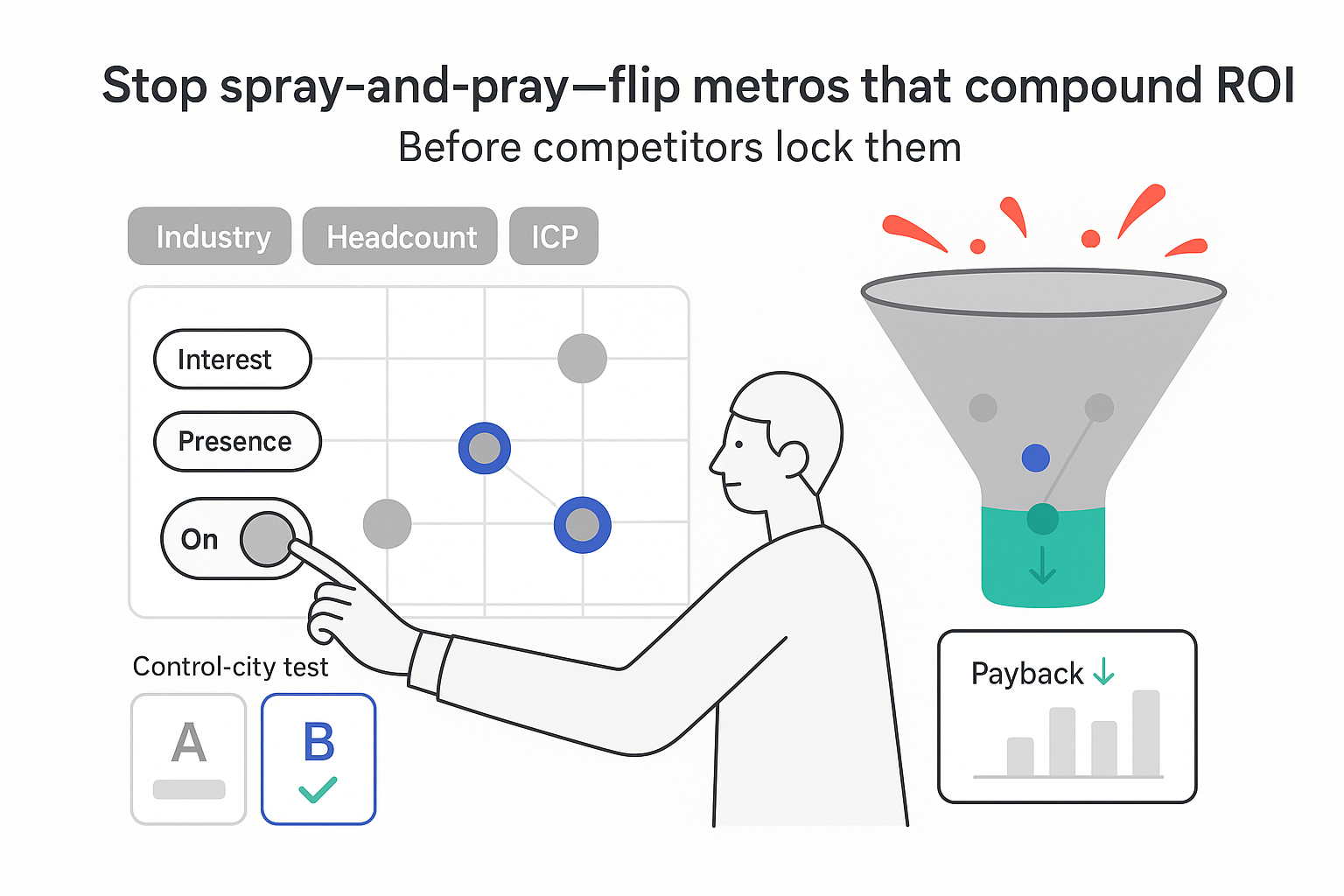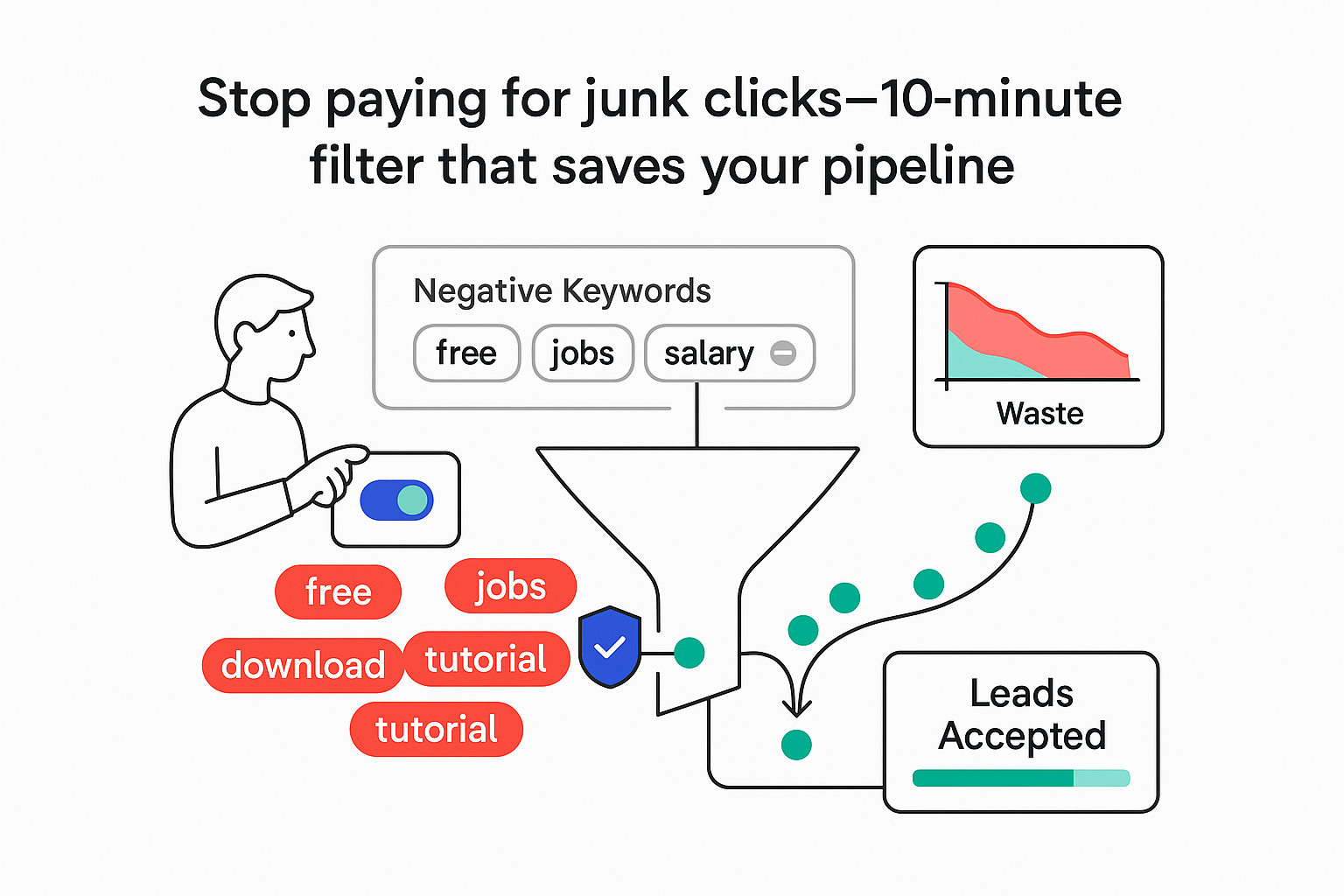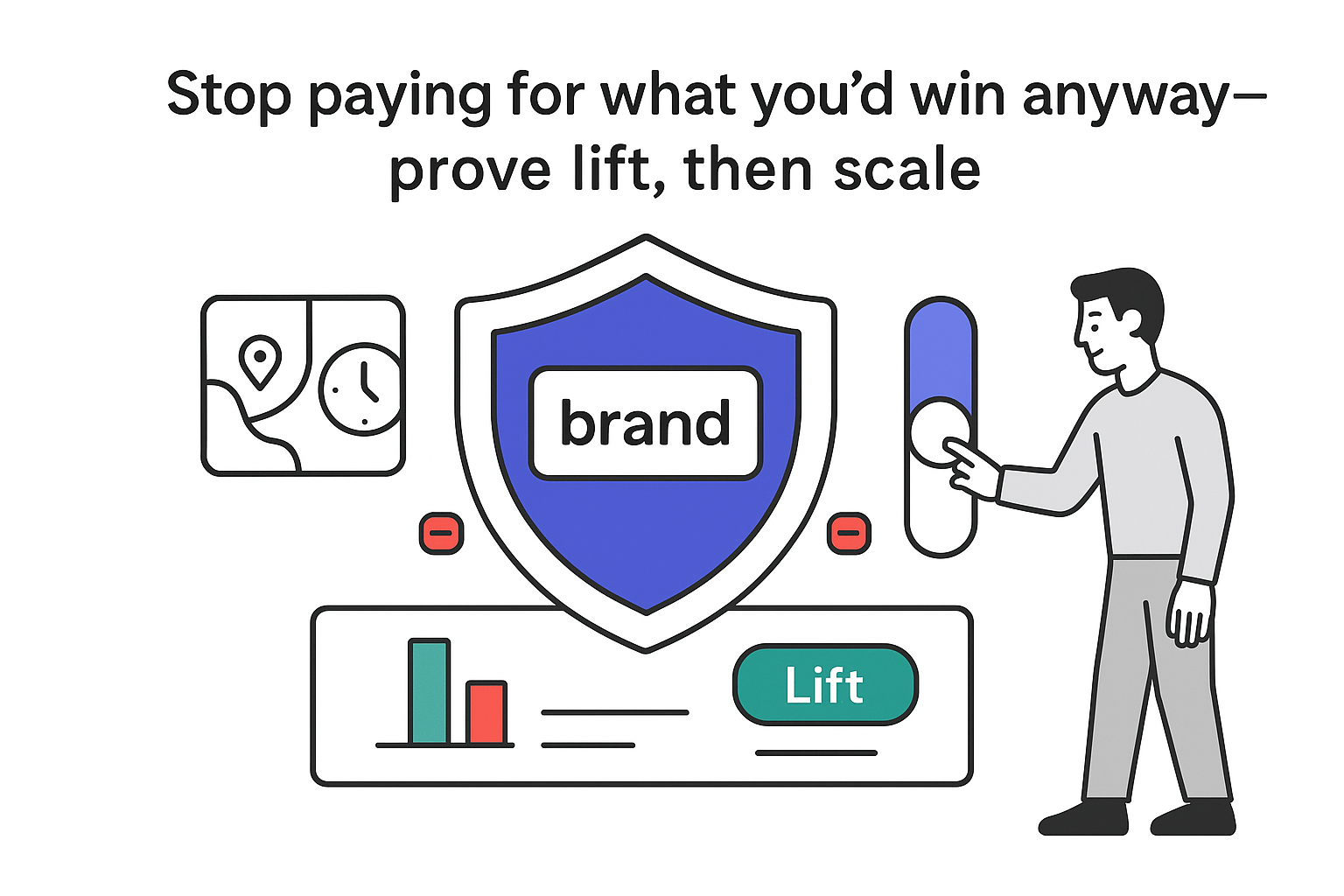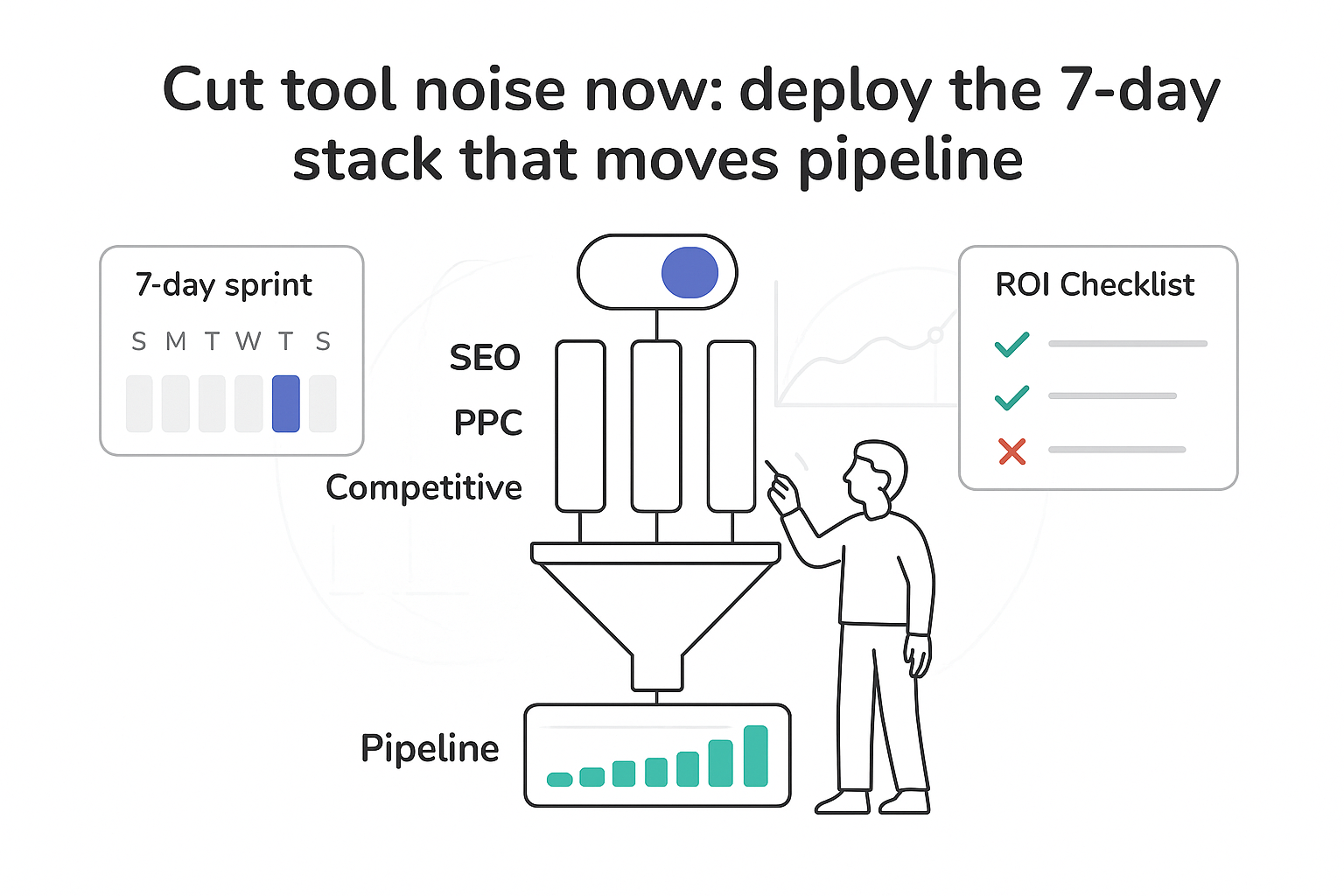If buyers type my service plus city into Google and I do not appear in the Map Pack, I am leaving deals on the table. The good news: B2B services can win local visibility faster than most leaders expect. The catch is simple: a clean profile, proof of real activity, and a website that backs it up. I treat this as operations for the front door of the brand - practical steps with timelines I can plan around.
Earn a Spot in the Map Pack: My Short Version
If I run a B2B service with a real office or an eligible service area, I can rank in the Map Pack. The quickest path is basics done right, then a steady cadence of proof that the business is alive and trusted.
- Claim and verify the Google Business Profile (GBP) with the exact legal name. Start here: Manage your business. Skip keyword stuffing - it risks suspension.
- Keep NAP consistent. Name, address, and a single primary phone number must match across the site and authoritative listings. If I use call tracking, I configure a local tracking number on GBP and list the main number as an additional phone.
- Build one local landing page per office. Include a clear service list, city and service terms in the title and H1, an embedded map, and genuine proof like team photos, client notes, and directions.
The First 14 Days: Actions That Move Fast
With the groundwork in place, I front-load proof and alignment that Google and buyers can trust.
- Verification first. Video verification is common now. I prep signage, office interior, tools of the trade, and a utility bill to make it smooth. Check your verification status.
- Category fit. I choose the best primary category that maps to revenue and add secondary categories for true supporting services. I compare options before locking them in.
- Services and descriptions. I add the core services with short, human descriptions aligned to my service pages.
- Reviews. I aim for 10 or more relevant reviews in the first 60 days, asking after project milestones. I encourage specifics - service and city - in the client's own words. No incentives.
- Photos and a short intro video. I show the team and real work. Stock images do not help.
- UTM tracking. I add parameters to the GBP website link (for example, ?utm_source=google&utm_medium=organic&utm_campaign=gbp) so I can see Map Pack traffic and calls in my analytics.
Operate the Profile Like an Owner: A Simple Monthly Cadence
Google's guidance covers every business type; I adapt it to B2B realities: clarity on services, proof of team, and steady updates.
- Completeness and compliance
- Fill every field in GBP, choose a primary category that matches the highest-margin service, and add secondary categories only for services I truly deliver. Update as needed in Manage your business.
- Verify the business and recheck status after edits that can trigger reverification.
- Use a real office or an eligible service area. Avoid virtual offices, P.O. boxes, and coworking addresses without a permanent, signed office and signage.
- Availability
- Keep hours accurate, including holidays. If I meet by appointment, I show regular office hours and add an Appointment link.
- Reviews and replies
- Ask after delivered milestones and respond within 48 hours. Never gate or offer incentives.
- Media and updates
- Add photos and short videos at least twice a month.
- Publish a weekly GBP Post with something buyers value now (case insight, regulation update, seasonal reminder).
- Services and Q&A
- List every service with a one-sentence description.
- Seed Q&A with real buyer questions and answer clearly.
Essentials Inside Google Business Profile
I complete every section. It takes about 30 minutes to set up, an hour to refine, and it pays off for months.
- Categories: The primary category must match the main service (e.g., an IT support firm chooses the closest match to "computer support and services"; an accounting partner chooses "accountant" or "accounting firm"). Secondary categories are for real offerings only.
- Services list: I add the key services with short descriptions that mirror on-site language. If services are localized, I include the city naturally, not stuffed.
- Business description: A plain-spoken bio - who I help, what I deliver, where I operate, and what makes my approach different.
- Attributes: I add relevant attributes (e.g., appointment required, accessibility) where true.
- Service areas: If I visit clients, I set service areas, but I keep in mind that proximity still dominates Map Pack visibility.
- Website URL with UTM: I use a tracked URL such as https://mydomain.com/locations/city with UTM parameters.
- Location landing page: I select the matching city page as the GBP landing page.
- Hours: I keep them current, including holidays or special events.
- Photos and videos: Exterior, interior, team at work, equipment, before/after when relevant.
- Posts and Q&A: I publish weekly posts and add three to five buyer questions with clear answers.
- Structured data: On the location page, I add LocalBusiness or ProfessionalService markup with name, address, phone, hours, and sameAs links. For key offerings, I add Service markup. For eligible case studies, I include Organization and Review markup.
Reviews That Carry Weight (and How I Respond)
In B2B, one specific review can outweigh ten generic ones. I aim for a steady, believable cadence and fast replies.
- Ask automatically after milestones, closeouts, or ticket resolution. Keep the message short and link directly to the GBP review form.
- Prompt for specificity without scripting: "If you're open to it, it helps others if you mention the service we handled and your location."
- Reply within 48 hours. I thank them, reference a detail they shared, and reinforce the service they mentioned. I avoid copying the same sentence.
- Negative response framework
- Acknowledge the issue.
- Own what I can and invite a brief offline follow-up.
- Share the fix once resolved, if appropriate.
- Example: "Thanks for the candid note about the onboarding delay in Denver. I reviewed our handoff and updated the checklist. If you're open to a quick call, I want to confirm the new timing works for your team."
- Policy compliance: No incentives, no gating, and I never ask employees or vendors to review.
- Surface proof on site: I add selected reviews to location pages and mark them up with LocalBusiness or ProfessionalService schema plus Review snippets.
Seasonality can nudge review volume. Q1 planning cycles often spike close-won projects and happy clients. I queue asks then and keep the cadence steady in quieter months.
Relevance, Distance, Prominence: How I Move Each Lever
Google defines local ranking by relevance, distance, and prominence. The Map Pack is the mix of all three. Service areas do not override proximity to the business address, and website and brand signals influence Maps even though it looks like a pure local module. Google's "Improve your local ranking" guidance confirms these principles, and long-running industry studies consistently show categories, reviews, and on-site alignment among top drivers.
- Relevance (match what I sell to what buyers seek)
- Pick one primary category tied to the highest-value service; add secondary categories for how buyers search, not everything I can do.
- List services in GBP with clear, readable descriptions; avoid stuffing city names.
- Align on-site: one page per core service linked from the location page; add internal links back to reinforce the local tie.
- Structured data: LocalBusiness/ProfessionalService on the location page and Service markup for key offerings.
- Q&A with intent terms: questions like "Do you handle SOC 2 audits in Austin?" or "Can you support 24/7 network monitoring in Chicago?" match common searches without clumsy keyword stuffing.
- Real photos: team, office, and work in action signal authenticity to buyers and to Google.
- Distance (your pin vs. the searcher)
- A legitimate office in the target city will outperform a service-area-only approach.
- Avoid virtual offices and short-term rentals; they risk suspension and uneven rankings.
- Optimize the location page with precise NAP, an embedded Google Map, directions from landmarks, parking notes, and local context.
- Ethical city pages: if one hub serves multiple cities, create high-quality pages with unique content, local client examples, and a clear path to book time. Thin, generic pages do not help.
- Multi-location: one GBP and one distinct location page per office, with unique local team, clients, and services highlighted.
- If a second office is not feasible yet, I still win organic clicks with strong city pages, even if Map Pack visibility remains tied to my primary office radius.
- Prominence (public footprint and brand demand)
- Reviews: aim for steady growth with specific comments that mention services and locations; a consistent 10–15 new reviews per quarter often outperforms a one-time spike.
- Citations: keep NAP consistent on Google, Apple, Bing, key industry directories, and authoritative local sites.
- Local links: sponsor or contribute to associations, chambers, scholarships, university programs, and nonprofit events; earn links from event pages, journals, and podcasts by sharing original insights or data.
- Press and brand signals: mentions in news, podcasts, and webinars increase branded searches; when more people search my name plus city and engage, Map Pack performance tends to lift.
- Active GBP presence: fresh photos, videos, and weekly posts are soft signals that the business is active.
A small contradiction that trips people up: the website absolutely influences Maps. When service and location pages make it easy to understand what I offer and where I operate, I match more queries. That is relevance in action.
Keep Score and Plan Realistic Timelines
I track what matters so I can forecast and diagnose.
- Add UTM parameters to the GBP website link and set up events for calls, direction requests, and site visits in my analytics platform.
- Watch branded search lift in Search Console or trends tools; it is a clean proxy for awareness and often correlates with better Map Pack visibility.
- Monitor category fit, review velocity and recency, proximity impacts, and engagement with the location page.
Expected timelines:
- 30–90 days: noticeable movement once the profile is complete, verified, and supported by reviews and on-site alignment.
- 3–6 months: in competitive markets, breaking into the top three often takes longer, especially against rivals with stronger review histories and long local tenure.
The Map Pack can feel fickle - pins rise and fall week to week. I stay centered on the controllables: verified profile, the right categories, a location page that mirrors my services, steady reviews, and a real footprint in the city I serve. Keep that cadence for a quarter, then two - that is how B2B service firms earn durable visibility and turn local search into reliable sales conversations.







.svg)